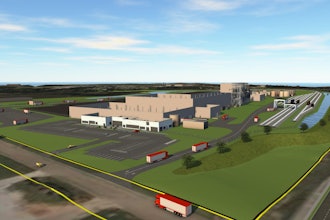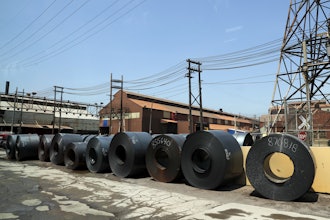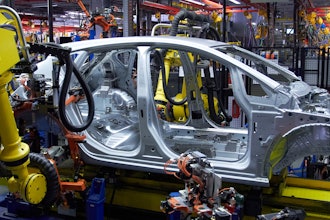
For this report, Manufacturing.net used several resources. We surveyed our readers to gain insight into their attitudes toward Internet of Things technology, platforms and Industrial IoT data security challenges. We also drew from conversations with IoT experts for added industry insight. These results are interspersed with data from other research reports and the author’s own analysis.
Although the Internet of Things, or IoT, is a term that often conjures references to automated homes or wearable, sensor-laden devices, this four-part series will focus on interconnected machines, software systems, work cells and other production and distribution-focused assets in the industrial sector. Specifically, it will discuss how the data generated and shared by these connections can be handled efficiently and safely across the enterprise.
The application and performance benefits of machine-to-machine communication are not new, but expanding this level of connectivity and shared access represents a fresh challenge for many manufacturers. IoT in the industrial space allows companies to collect massive amounts of raw data from embedded sensors and software that can be stored, analyzed and accessed to provide meaningful insight into all areas of the enterprise.

Perhaps surprising to some, manufacturing could play the most significant role in IoT development and implementation, much more so than the aforementioned home electronics and wearables. Manufacturing facilities frequently rely upon software, machine-to-machine communication and data-driven decisions where thousandth-of-a-second precision is demanded, so the reliability and security of the Industrial IoT (IIoT) platform faces higher levels of accountability than any other application.
One positive influence of this operational dynamic has been the need for various vendors to provide IoT-related technology that is capable of speaking the same language. That enables simplified human and mobile device interaction with these assets, regardless of brand or software, producing a truly connected open-source enterprise.
For this reason, among others, a number of manufacturers have jumped into IoT headfirst. However, some are hesitant due to the interconnected nature of so many assets, and the inherent challenges related to effectively integrating and managing such an approach.
Sean Riley, Global Manufacturing and Supply Chain Solutions Director at Software AG, warns against slow adoption. “Unfortunately, being a follower, or even a fast follower, will result in an innovation loss to competitors that do pursue IoT as part of their strategy,” Riley says. “Typically this is a sound strategy; however, early adopters of IoT in their business strategies might advance too quickly for others to catch up because incorporating IoT is much different than adding automation to a production line.”
“Unfortunately, being a follower, or even a fast follower, will result in an innovation loss to competitors that do pursue IoT as part of their strategy,” says Sean Riley of Software AG.
So, for all of IoT’s benefits, the novelty of integrating this technology and providing access to all the related information causes many manufacturers to pause. A side effect of greater data visibility, touted as key in many lean manufacturing doctrines, is the reality of increased vulnerability. Legacy approaches to data storage and IP protection will present security challenges as connectivity increases. This makes data security a chief concern for manufacturers exploring IIoT.
In this series, we will present the advice of manufacturers and IoT experts as we investigate manufacturers’ varied attitudes toward IoT, data security concerns and solutions to make that data more secure.
Check in tomorrow for Industrial IoT: Manufacturers’ Varied Attitudes.





















